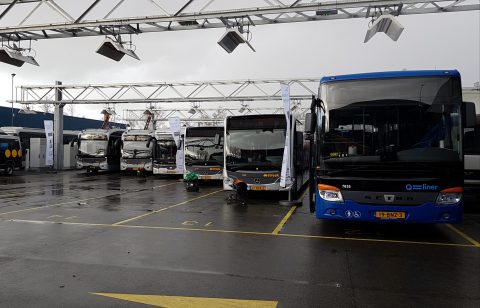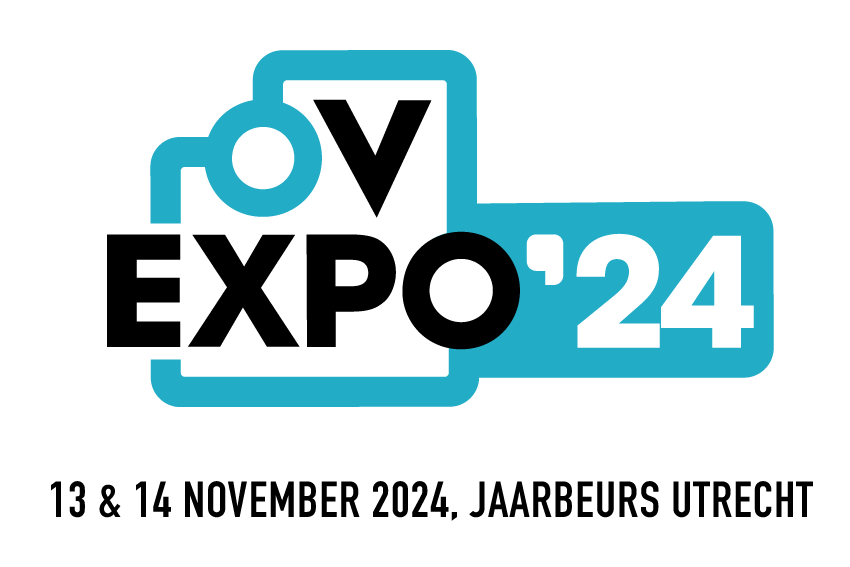Hoeveel stroom heeft een elektrische busvloot nodig?
Een belangrijke stap bij het plannen van een elektrisch wagenpark is om met het nutsbedrijf te bespreken hoe een vervoerder aan de benodigde elektriciteit kan komen. De eerste vraag die daarbij wordt gesteld, is hoeveel stroom er nodig is. ChargeSim, exposant op OV Expo ’21, zet (in het Engels) de belangrijkste punten uiteen waarmee rekening moet worden gehouden voor een elektrische busvloot.
Utilities need to size their equipment for worst-case peak loads, so peak power is an essential element for their design and costs. Utilities charge for energy and for peak demand, ~€4/kW/month (or €600/month for a large 150kW DC fast charger) is a typical price in the Netherlands. Peak demand charges often drive the utility’s charging costs, based on the highest power, usually over a 15-minute interval, each month. A high peak power – even just once in a month – can easily add thousands to the monthly utility costs, which you may find yourself locked into for a year. Charge management and planning keeps the peak power below a pre-set limit and can dramatically cut the electricity costs while making little or no difference to vehicle availability.
The simplest way to plan charging is to assume one charger per vehicle and design the peak capacity to charge all of them at the same time. This can be sufficient for a small fleet, or for a first partial installation where any excess equipment will just be used when the next batch of electric vehicles is purchased. For a large fleet, of around 100 buses, that could be 150kW x 100 chargers = 15MW (€60k in monthly demand charges alone), which will probably be far more power, and chargers than actually required.
Too high
So why is the first estimate too high? The chargers aren’t working very hard and the grid isn’t being used very efficiently. If the buses have 450kWh batteries, then a 150kW charger could fill them in three to four hours. (Charging slows down as the battery gets full, so charging will take more than three hours) The buses also won’t arrive completely empty, usually the routes will be planned to leave some energy in reserve, and the variation in routes means that some short routes will use much less energy and some buses return half full. The means lots of expensive charging equipment, which is only working two or three hours per day, usually at the same time causing high peak demand. By distributing the charging while the buses are at the depot, less charging equipment may be needed, and the peak energy demand can be lowered.
There are a few ways to distribute the charging over time and select better equipment. Using smaller chargers is cheaper but costs flexibility. For example, if buses come back at mid-day, they may need to charge at 150kW and be recharged in time for the evening peak. Faster chargers also give more flexibility of when to charge, for example doing more charging at cheap overnight energy prices or making the best use of grid capacity when the lot isn’t full. A mix of charger sizes can provide the necessary flexibility while reducing costs. Some vendors are offering multiple-dispenser chargers which can switch power between different outputs, giving the flexibility of high-power charging, without the costs of buying more chargers or moving buses around for charging. Finding the right mix of chargers for a fleet is a complex analysis.
Prevent high peak demands
Charge Management software is essential to prevent high peak demands. It controls the chargers on a minute-by-minute basis to keep below a pre-set limit and avoid unnecessary peak demand charges. With Charge Management software, the available power can be allocated between the chargers and dramatically lower the demand, as in the figure. Charge Management can potentially reduce peak demands by less than half, in the above case, saving over €30k/month. Finding the right charge management methods, chargers, and peak power limits, can result in substantial savings.
ChargeSim is a software modeling tool to help predict and optimize chargers and plan charging, it can create projections of peak power requirements for charging EV fleets and help find the best configurations of chargers. It can translate your schedule into the projected loads your utility needs.
Maak 16 september bij stand 3.713 kennis met ChargeSim. Deelname aan OV Expo ’21 in Expo Houten is in de meeste gevallen gratis.

morenews
OV Innovatieprijs: Slim algoritme van Lynxx voorspelt en voorkomt storingen
Iedereen maakt het weleens mee. Onderweg naar het station zien dat je trein op het laatste moment uitvalt door een wisselstoring. In de toekomst zou dit een stuk minder voorkomen, als het aan data-science bedrijf Lynxx ligt. Met slimme zelflerende algoritmes kunnen heel veel storingen voorspeld worden. Dit bespaart niet alleen veel ongemak voor de reiziger, maar… Lees verder ›
OV Innovatieprijs: Flexibel OV boeken in 9292-app met HaltetaxiRRReis
De flexibilisering van het openbaar vervoer neemt de komende jaren toe. Dunne provinciale lijnen zullen minder vaak rijden of helemaal verdwijnen. Precies op die ontwikkeling speelt Qarin in met de innovatie HaltetaxiRRReis, die in opdracht van de provincie Gelderland is ontwikkeld. Met deze vernieuwing is Qarin samen met 9292 genomineerd voor de OV Innovatieprijs die wordt… Lees verder ›
OV Innovatieprijs: Zeeland Voordeel is het eerste abonnement dat meedenkt met de reiziger
Veel OV-abonnementen stammen nog uit de tijd van de strippenkaart. Volledig achterhaald, volgens Paul Engelbert van Transdev. Zeeland Voordeel is een abonnementsvorm die automatisch korting doorberekent op basis van het reisgedrag. Deze innovatie is genomineerd voor de OV Innovatieprijs die wordt uitgereikt op de OV Expo ’22 op 6 oktober in Houten. Bekijk de andere genomineerden en… Lees verder ›
